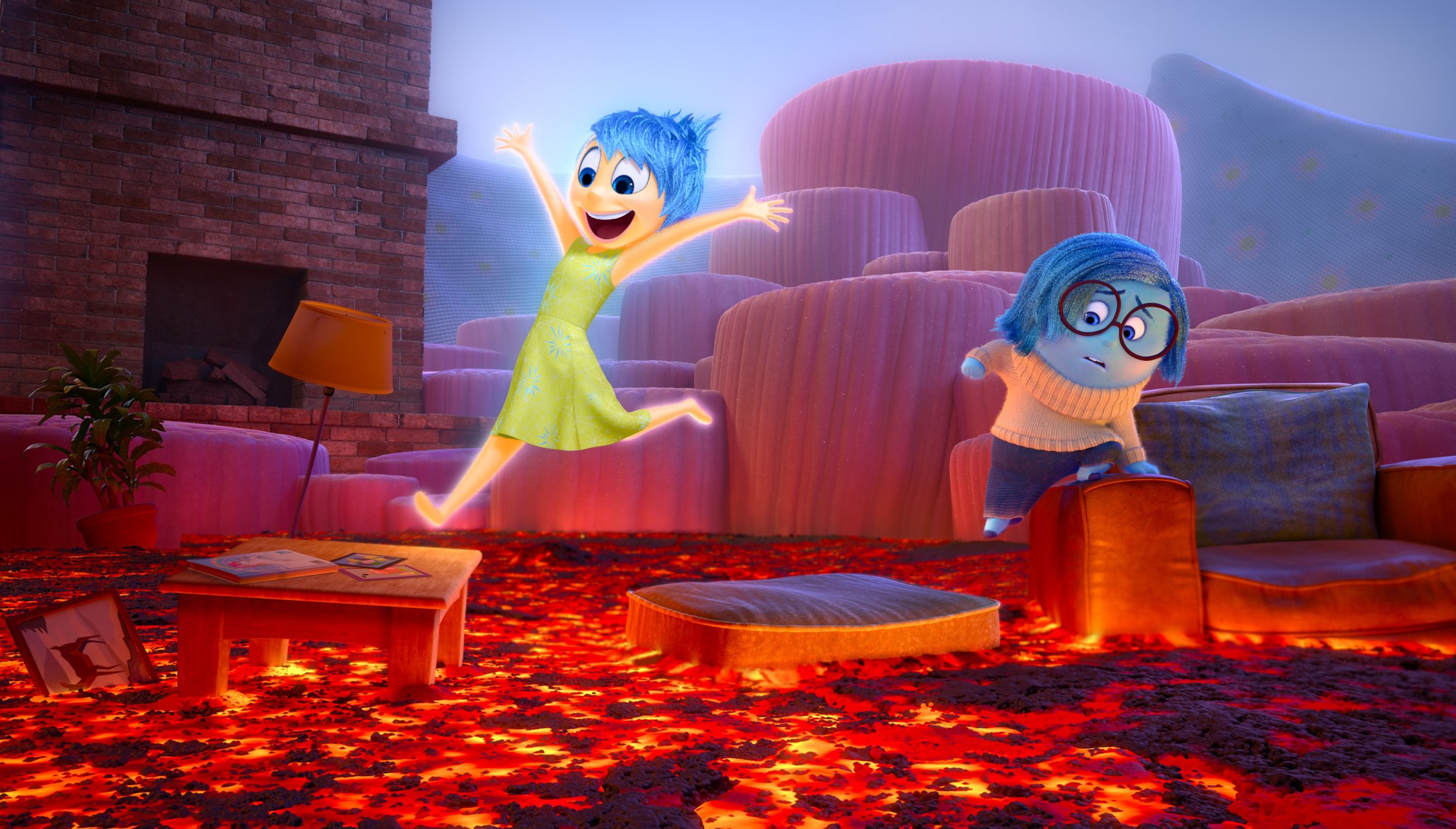
Your brain does not operate the way the folks at Pixar say it should–and that’s a pity. It goes about its job in its blobby, gray-white way, processing your fear, your sorrow, your joy in your amygdala, your limbic system, your prefrontal cortex, while your hippocampus handles your memories.
What your brain doesn’t have is a mission-control room in a gleaming white tower staffed by five multicolored characters–Joy, Sadness, Disgust, Anger and Fear–watching the world through your eyes and dialing up the right feeling for the right moment. What it also doesn’t have is a great city laid out at the foot of the tower, with a movie studio where your dreams are made, a Goofball Island where your playfulness lives and a train of thought that is actually a train.
Your brain doesn’t have any of that, but Riley’s does. Riley is the 11-year-old girl (voiced by Kaitlyn Dias) in whose head we spend most of the mind-bending Inside Out, the latest release from Disney’s animation Wurlitzer, Pixar. We meet Riley as a newborn when she opens her eyes and catches a glimpse of her cooing parents, and her first memory–in the form of a shimmering, yellow bowling ball of glass–rolls down a chute onto a shelf in the control room.
Joy (Amy Poehler) is at the controls at that moment, but soon enough Sadness (The Office’s Phyllis Smith) turns a knob, the baby starts fussing, and another glass ball, this one blue, rolls down the chute. So it goes for Riley’s first day of life–and every day thereafter–as hundreds of glass balls, all color-coded, are collected and designated for storage.
That Inside Out’s story turns on a traumatic year in Riley’s life in which she and her family move from bucolic Minnesota to an alien San Francisco–leading to bedlam in her emotional control room–is almost secondary. The same is true for the movie’s brilliant casting. (Who else would you get to play Fear, Disgust and Anger but Bill Hader, Mindy Kaling and Lewis Black?)
The genius of Inside Out is the way it cunningly illuminates the workings of the brain, an organ that’s always been mystifying in its complexity and opaque in its function. The heart looks like the pump it is. But the brain–still and silent and too cool for school? A riddle.
So Inside Out answers it. Jelly-bean-shaped workers walk the aisles of Riley’s archives, vacuuming out the memory globes she no longer needs–the names of all the glitter princesses she could recite in pre-K, say. That may not be how the brain actually works, but it’s not exactly not how either. The same is true of a chamber called Abstract Thought, which turns characters Picassoesque when they enter, and an Imagination Land that stamps out make-believe boyfriends who all say, “I would die for Riley.” Refracted through these hallucinogenic prisms, the real brain makes more sense.
Most important is what Inside Out says about your emotions. It may be Joy who leads the movie’s save-Riley mission, but it is Sadness who makes sure it succeeds–with big assists from Disgust, Anger and Fear. Your mind contains multitudes, and as Inside Out makes clear, you need them all.
Kluger is TIME’s science writer and author of The Narcissist Next Door
More Must-Reads From TIME
- Dua Lipa Manifested All of This
- Exclusive: Google Workers Revolt Over $1.2 Billion Contract With Israel
- Stop Looking for Your Forever Home
- The Sympathizer Counters 50 Years of Hollywood Vietnam War Narratives
- The Bliss of Seeing the Eclipse From Cleveland
- Hormonal Birth Control Doesn’t Deserve Its Bad Reputation
- The Best TV Shows to Watch on Peacock
- Want Weekly Recs on What to Watch, Read, and More? Sign Up for Worth Your Time
Write to Jeffrey Kluger at jeffrey.kluger@time.com